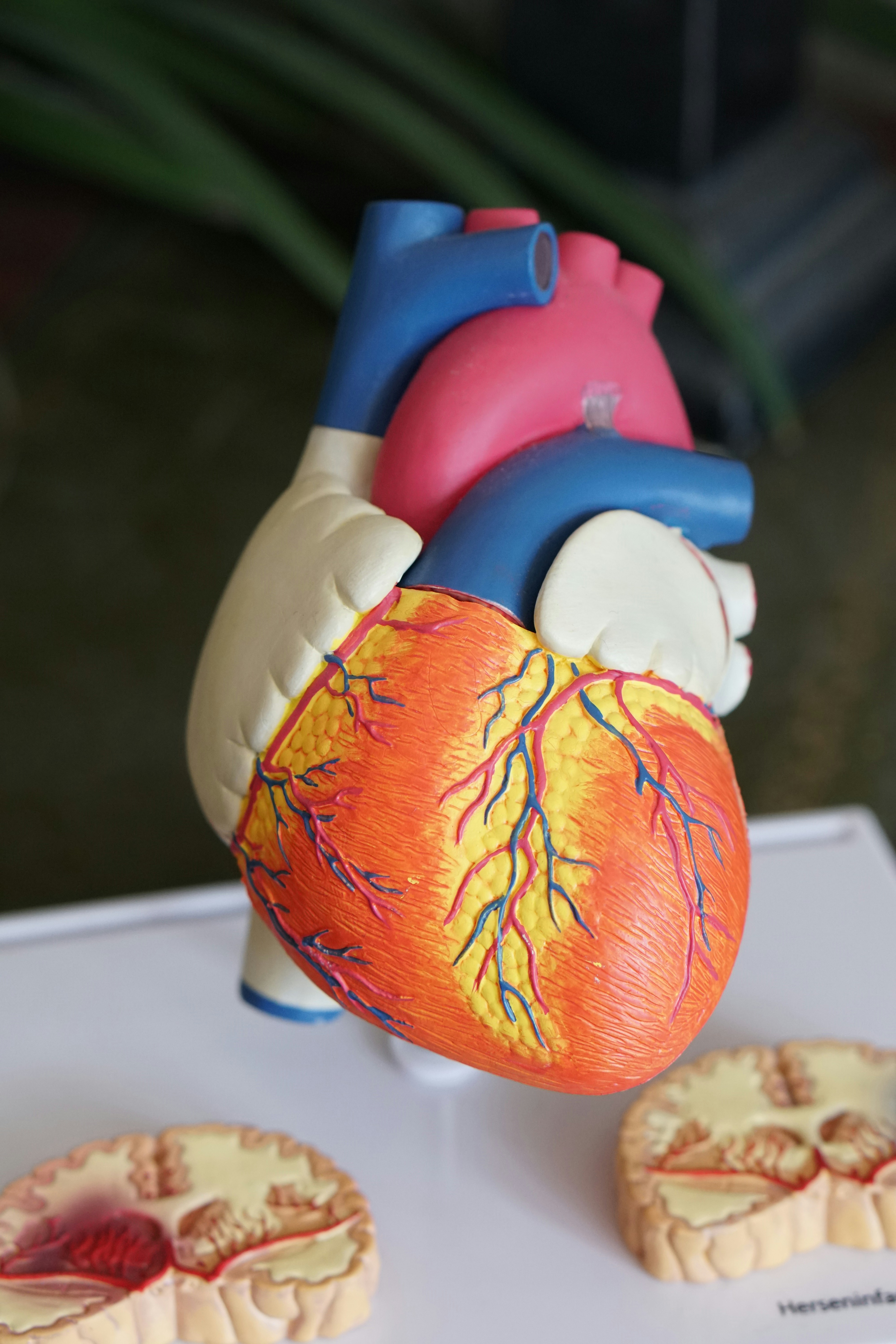Learn about synovial cysts in the spine, their causes, symptoms, and treatment options. Find out how to manage pain and make informed decisions for your health.
In this article, we will be discussing synovial cysts in the spine and how they can affect your daily life. You will learn about what synovial cysts are, how they form, and the common symptoms associated with them. We will also delve into the available treatment options and ways to manage the pain and discomfort caused by these cysts. By the end of this article, you will have a better understanding of synovial cysts in the spine and be equipped with the knowledge to make informed decisions regarding your health.
What is a Synovial Cyst in the Spine?
Definition of a Synovial Cyst
A synovial cyst is a fluid-filled sac that develops near the joints in the spine. It is usually associated with degenerative changes in the spine and commonly occurs in the lumbar region. The cyst itself arises from the synovial joint capsules, which surround the joints and are filled with synovial fluid. Synovial cysts can cause symptoms such as pain and nerve compression, requiring medical intervention.
Location of Synovial Cysts in the Spine
Synovial cysts are most commonly found in the lumbar spine, particularly in the lower back area. They can also occur in the cervical (neck) and thoracic (mid-back) regions, although this is less common. In the lumbar spine, the cysts tend to develop near the facet joints, which are responsible for facilitating movement between the vertebrae. The cysts can grow in size and put pressure on nearby nerves or the spinal cord, leading to symptoms.
Causes of Synovial Cysts in the Spine
The exact cause of synovial cysts in the spine is not fully understood, but it is believed to be associated with degenerative changes in the spine. As we age, the spinal discs between the vertebrae can wear down, causing the facet joints to become overworked. Over time, this repetitive stress can lead to the development of synovial cysts. Other factors that may contribute to their formation include spinal arthritis, joint instability, and previous spinal surgery.
Symptoms and Diagnosis
Common Symptoms of Synovial Cysts in the Spine
The symptoms of a synovial cyst vary depending on its location and size. However, common symptoms include localized back pain, which may radiate to the buttocks, hips, or thighs. Numbness, tingling, and weakness in the affected leg or arm are also common, as the cyst can compress nearby nerves. In severe cases, bladder or bowel dysfunction may occur. If you experience any of these symptoms, it is important to consult a healthcare professional for an accurate diagnosis.
Differential Diagnosis
Several conditions can cause similar symptoms to synovial cysts, making an accurate diagnosis essential. Other potential causes of back and leg pain include herniated discs, spinal stenosis, and degenerative disc disease. A thorough clinical evaluation, including medical history, physical examination, and diagnostic imaging, is necessary to differentiate synovial cysts from other spinal conditions.
Imaging Techniques for Diagnosing Synovial Cysts
Imaging techniques are crucial for diagnosing synovial cysts in the spine. X-rays provide a basic overview of the spinal anatomy and may show signs of degenerative changes. Magnetic Resonance Imaging (MRI) is the most effective tool for visualizing synovial cysts. It provides detailed images of the soft tissues, allowing doctors to accurately locate and assess the size of the cyst.
Treatment Options
Non-surgical Treatments for Synovial Cysts
Non-surgical treatments are often the first-line approach to managing synovial cysts in the spine. These conservative treatments aim to alleviate pain, reduce inflammation, and improve mobility. Nonsteroidal anti-inflammatory drugs (NSAIDs) and analgesics can help manage pain and reduce swelling. Physical therapy exercises are recommended to improve flexibility, strengthen the muscles supporting the spine, and relieve pressure on the cyst. Epidural steroid injections may also be used to reduce inflammation and provide temporary pain relief.
Surgical Treatment of Synovial Cysts
If non-surgical treatments fail to provide adequate relief or if the symptoms are severe, surgical intervention may be necessary. The surgical procedure for synovial cyst removal is known as cystectomy or cyst decompression. During this procedure, the cyst is removed, and any underlying degenerative changes in the spine are addressed. The surgery aims to alleviate symptoms, relieve nerve compression, and stabilize the affected spinal segment.
Minimally Invasive Procedures
Advancements in medical technology have led to the development of minimally invasive procedures for synovial cyst removal. These procedures use smaller incisions and specialized instruments to access and remove the cyst. Minimally invasive techniques have several advantages over traditional open surgery, including reduced postoperative pain, shorter hospital stays, and quicker recovery times.
Complications and Risks
Potential Complications of Synovial Cysts in the Spine
Although rare, complications can occur during or after surgery for synovial cysts. Infection is a potential risk, which can lead to delayed healing and require additional treatment. Nerve injury or damage can occur during the surgical procedure, resulting in temporary or permanent neurological deficits. Other potential complications include the formation of scar tissue around the surgical site, disc herniation, or recurrence of the cyst.
Associated Risks with Surgical Treatment
Surgical treatment for synovial cysts carries certain risks inherent to any surgical procedure. These risks include anesthesia-related complications, bleeding, and blood clots. Additionally, individual patient factors, such as age, overall health, and pre-existing medical conditions, can increase the risk of complications. It is important to discuss the potential risks and benefits with your healthcare provider before undergoing any surgical intervention.
Prevention and Lifestyle Modifications
Preventing the Formation of Synovial Cysts in the Spine
While it may not be possible to completely prevent the formation of synovial cysts in the spine, certain lifestyle modifications can help reduce the risk. Maintaining a healthy weight and engaging in regular exercise can help minimize wear and tear on the spine. Practicing proper body mechanics and lifting techniques can also reduce the likelihood of spinal injuries. It is important to avoid repetitive activities or motions that put excessive strain on the spine.
Recommended Lifestyle Modifications
Certain lifestyle modifications can help manage symptoms and promote spinal health. Engaging in low-impact exercises, such as swimming or walking, can improve strength and flexibility while minimizing strain on the spine. Good posture, along with ergonomic modifications to your workspace and daily activities, can reduce stress on the spinal joints and prevent the development or worsening of synovial cysts.
Recovery and Rehabilitation
Post-Surgical Recovery Process
The post-surgical recovery process following synovial cyst removal varies depending on the individual and the complexity of the procedure. Typically, patients are advised to limit physical activities and avoid heavy lifting for a specified period. Pain medications are often prescribed to manage postoperative pain. Follow-up appointments with the healthcare provider are necessary to monitor the healing process and address any concerns.
Physical Therapy and Rehabilitation
Physical therapy is an essential component of the recovery and rehabilitation process after synovial cyst surgery. A physical therapist can design a personalized rehabilitation program to improve strength, flexibility, and range of motion. The therapist will guide you through exercises and techniques aimed at restoring optimal function and preventing further spinal degeneration.

Management and Follow-up
Long-term Management of Synovial Cysts
Long-term management of synovial cysts involves monitoring for potential recurrence or the development of new cysts. Regular check-ups with your healthcare provider are important to evaluate the effectiveness of the treatment and manage any ongoing symptoms. It is also essential to continue implementing lifestyle modifications such as maintaining a healthy weight, engaging in regular exercise, and practicing proper body mechanics.
Follow-up Care and Check-ups
Follow-up care is crucial in the management of synovial cysts in the spine. It allows the healthcare provider to assess your progress, monitor any potential complications, and adjust the treatment plan if necessary. Follow-up appointments may include physical examinations, imaging studies, and discussions regarding pain management and further interventions.
Alternative and Complementary Therapies
Non-conventional Approaches to Treating Synovial Cysts
Some individuals may explore non-conventional approaches to managing synovial cysts in the spine. These approaches can include alternative therapies such as acupuncture, chiropractic care, or herbal remedies. While these therapies may provide temporary relief or adjunctive benefits, their effectiveness in directly treating synovial cysts remains unclear. It is important to discuss these options with your healthcare provider before incorporating them into your treatment plan.
Role of Complementary Therapies
Complementary therapies, such as yoga, meditation, and relaxation techniques, may play a role in managing the symptoms associated with synovial cysts. These therapies can reduce stress, improve overall well-being, and enhance the body’s natural healing process. They can be used in conjunction with medical treatments to enhance pain management and improve quality of life.

Research and Advancements
Latest Research on Synovial Cysts in the Spine
Ongoing research is focused on understanding the underlying causes of synovial cysts in the spine and finding more effective treatment options. Recent studies have explored the genetic factors that may predispose individuals to cyst development and the role of inflammation in cyst formation. Furthermore, advancements in surgical techniques, imaging technologies, and minimally invasive procedures are continually being pursued to improve patient outcomes.
Promising Advancements in Treatment
Advancements in treatment for synovial cysts include the development of novel surgical techniques and the use of regenerative medicine. Minimally invasive procedures, such as endoscopic cyst removal, have shown promising results in terms of reduced postoperative pain and faster recovery times. Additionally, researchers are exploring the potential of using stem cells or growth factors to promote tissue regeneration and healing after cyst removal.
Conclusion
Understanding synovial cysts in the spine is essential for accurate diagnosis and effective management. These fluid-filled sacs, often associated with degenerative changes in the spine, can cause pain and nerve compression. Non-surgical treatments are typically the first approach to managing synovial cysts, but surgical intervention may be necessary in severe cases. Lifestyle modifications, physical therapy, and regular follow-up care are essential for long-term management and prevention. Ongoing research and advancements continue to improve our understanding and treatment options, offering hope for better outcomes in the future.



